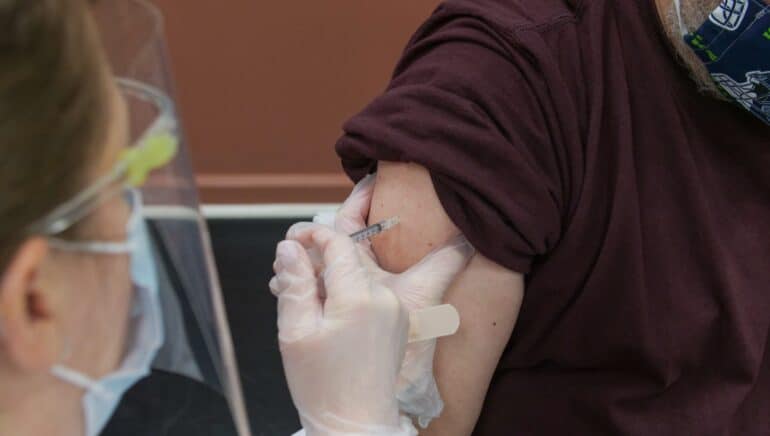If you ask around in your own circle of acquaintances, you will find that the vaccination coverage rate is now significant. In Austria, it seems, everyone who really wants a vaccination has already received at least a partial vaccination – regardless of prioritization, age or medical history. The EU vaccination rate lags about 6 weeks behind the U.S., 9 weeks behind the U.K., and 12 weeks behind Israel. From a European perspective, this allows a preview of the challenges ahead.

Israel, as a pioneer, has shown that new infections can be brought largely under control with a proportion of at least 50% of the population at least partially vaccinated. But even Israel is still a long way from reaching the critical threshold of 65-75% immunization. Above this immunization rate, experts assume herd immunity. Although the infection incidence at an immunization rate of 70% will not differ significantly from that at an immunization rate of 50%, reaching the threshold is essential to prevent the emergence of vaccine-resistant virus variants.

In an international comparison, vaccination progress in the EU follows that of the USA almost exactly, with a 6-week delay. Israel and the UK were able to achieve faster progress due to initially larger vaccine quotas and different vaccination strategies (the UK started with almost exclusively partial vaccinations and a longer interval to the second vaccination). The graph above compares the vaccination progress in the days after reaching the 10% partial vaccination threshold. Most recently, vaccination progress in Israel has come to a virtual standstill, due to a payment dispute with the main supplier, Pfizer, on the one hand, and the declining willingness of the population to be vaccinated on the other.

In all countries that are ahead of the EU in vaccination, a striking reduction in weekly vaccinations was seen 7 to 9 weeks after the 10% partial vaccination threshold was reached. The EU member states are currently in this transition phase and the explanation is obvious – vaccination skepticism. The University of Vienna measures the willingness of the population to be vaccinated at regular intervals and was able to establish in April that in Austria, in addition to the 22% who have already been at least partially vaccinated, the group of those willing to be vaccinated with 37% of the population is faced by 36% vaccination skeptics or opponents. In addition, the age group 0-10, which represents about 10% of the population in Austria, cannot be vaccinated in the foreseeable future. This would mean, ceteris paribus, that only 60% of the population in Austria can be vaccinated voluntarily.

Internationally, it is becoming increasingly difficult to find takers for vaccine doses if the proportion of partially vaccinated people exceeds 30%. In the USA, vaccination lotteries have been launched in many places, offering all vaccinated persons the chance to win considerable amounts of money. This is intended to combat the increasing vaccination fatigue. At least anecdotally, there seems to be evidence of positive effects of such measures. However, information campaigns and tying citizenship privileges to vaccination status seem to be the more effective way forward. In the United Kingdom, full participation in public life is available only to those who are more vaccinated or tested. However, vaccination readiness in the United Kingdom has been and continues to be very high by European standards, as reflected in continuously good vaccination progress.
Conclusion
Although many citizens in Europe are still waiting for their first shot, we are already in the midst of the transition from the vaccine shortage phase to the vaccination willingness shortage phase. Especially for countries with large numbers of vaccine skeptics, such as France or Italy, achieving herd immunity will be a major political and societal challenge. Even if the end of the pandemic seems within reach for citizens as well as politicians due to the rapidly decreasing number of cases, full vaccination coverage must be strived for. Otherwise, it is only a matter of time before a vaccine-resistant virus mutant becomes established. Vaccine manufacturing capacity has been massively expanded and at least the developed world can be rapidly vaccinated against new mutants via boosters already ordered for the following years. However, a renewed flare-up of the pandemic in the rest of the world may have strong negative consequences on the economic recovery in supposedly protected countries.
Legal note:
Prognoses are no reliable indicator for future performance.

